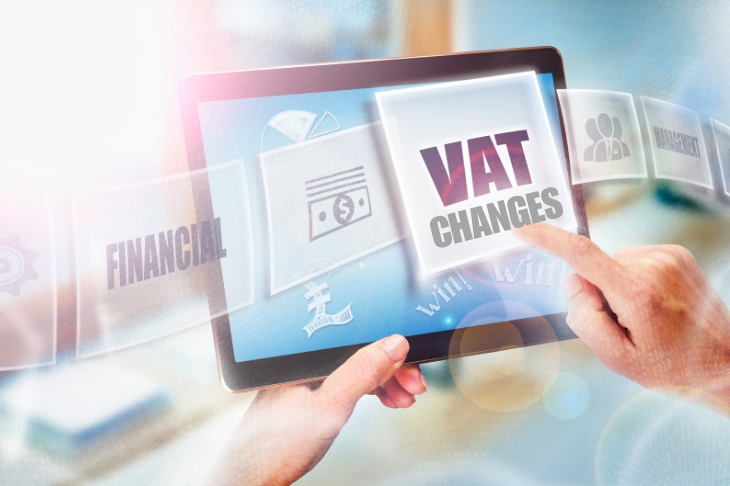

If you’re running a business in Romania, or looking to set one up soon, here’s clear, and easy to understand guidance on the upcoming VAT changes in Romania, effective from 1 August 2025. This article explains what is changing, why it matters to business owners (and not only), and how you can prepare practically.
Starting with 1 August 2025, Romania will raise its standard VAT rate from 19% to 21%. At the same time, the current reduced rates of 5% and 9%, which are applicable for certain types of economic activities, will be merged into a single reduced VAT rate of 11%.
So, after 1 August 2025 only two VAT rates will remain: the 21% standard (for most types of economic activities), and the new 11% reduced rate (for specific services or products). These changes were recently approved by the Parliament and signed into law by President Nicușor Dan and are expected to enter into force as of 1 August 2025.
At this moment, Romania has one of the highest fiscal deficits in the European Union. Consolidating VAT rates and increasing the standard rate helps broaden the tax base and raises an estimated extra 6 billion RON per year, which is around €1.2 billion. This additional money will be feeding vital public spending and fulfilling EU budget rules. The country is also pursuing euro‑adoption aspirations and fiscal discipline standards, which these reforms will support.
The reunited reduced rate of 11% now applies to most goods and services previously taxed at 5% or 9%. That includes human medicines, food (excluding alcohol, sugary items over 10 g per 100 g and certain supplements), books, newspapers, magazines in physical or digital format (unless primarily audio/video or advertising), water supply and sewage, water for irrigation, certain agricultural inputs and services, access to museums, castles, botanic gardens and monuments, firewood and certain wood pellets for heating, thermal energy in cold season for specific consumer groups, social housing transactions, and hotel, camping, restaurant and catering services (excluding alcoholic and certain sugary drinks).
Some supplies that were taxed at 9% – such as housing in social policy programs – were allowed a transition period until 1 August 2026, but generally all reduced‑rate goods and services will be under the new 11% rate from August 2025.
However, the HoReCa sector (hotels, restaurants, catering) will remain on the reduced rate for now – but the government will monitor VAT revenues in this sector, and if targets aren’t met, these services may be switched to the 21% standard rate later.
If you own a business that is subject to Romanian VAT, here’s what you should know:
When you supply goods or services in Romania, the VAT you charge depends on the supply date, not the invoice date. So if delivery or provision happens on or after 1 August 2025, you must charge one of the new VAT rates – 21% or 11% accordingly – even if you invoice earlier or later.
If you’re buying from Romania, your supplier will issue VAT at the new rates once the supply date falls after that cut‑off.
Romania has also rolled out mandatory B2C e‑invoicing from 1 January 2025 and is requiring SAF‑T reporting for small and non‑resident taxpayers from mid‑2025.
Pricing structures, contracts and cash flow forecasts may need revision. Even if you choose to absorb the VAT increase internally, that could impact your profitability. Alternatively, passing the full VAT increase to prices could affect demand and your competitive position in the market.
First, make sure your company’s accounting and ERP systems are updated to include the new 21% and 11% VAT codes. And that they apply the cut‑off logic based on supply date. This ensures invoices issued in advance for supplies made after 1 August are taxed correctly, and vice versa.
Second, review your contracts. If you guarantee a net price and you pay VAT, you’ll need to either renegotiate or just reprice to reflect the higher rate. Clarify the treatment of pre‑paid goods or services that span the VAT rate change.
Third, test your systems in July/August, ideally running invoices under both old and new rates in parallel, to identify cut‑off errors early.
Fourth, ensure your finance, sales and procurement teams understand the changes, especially those responsible for entering supply dates and validating VAT amounts.
Finally, think about how you’ll communicate with clients, suppliers, and even your staff. Your clients or consumers will receive invoices with different Romanian VAT. It’s wise to explain price adjustments clearly and show you’re compliant and responsible.
The new VAT rules described above apply to all types of companies – i.e., irrespective if they follow the micro-company taxation system or the standard net profit taxation system.
Raising the standard VAT rate by 2 percentage points is estimated to feed through as about 0.4 percentage points of inflation, with reduced‑rate goods adding smaller impact. But the real effect depends also on other aspects. This is whether businesses will absorb or pass through the cost, and on the overall demand in Romania.
Because reduced‑rate goods represent a significant share of consumer spending (food, medicines, cultural services), maintaining a reduced band could avoid broader inflation. While simplifying from multiple lower rates will reduce administrative complexity.
The VAT changes in Romania will affect almost every sector of business – from consumer goods to hotel stays and public services.
For non‑fiscal experts this will be a significant change. Therefore, understanding supply date rules, updating systems, reviewing contracts and testing workflows with enough time ahead of the switch will help avoid costly mistakes.